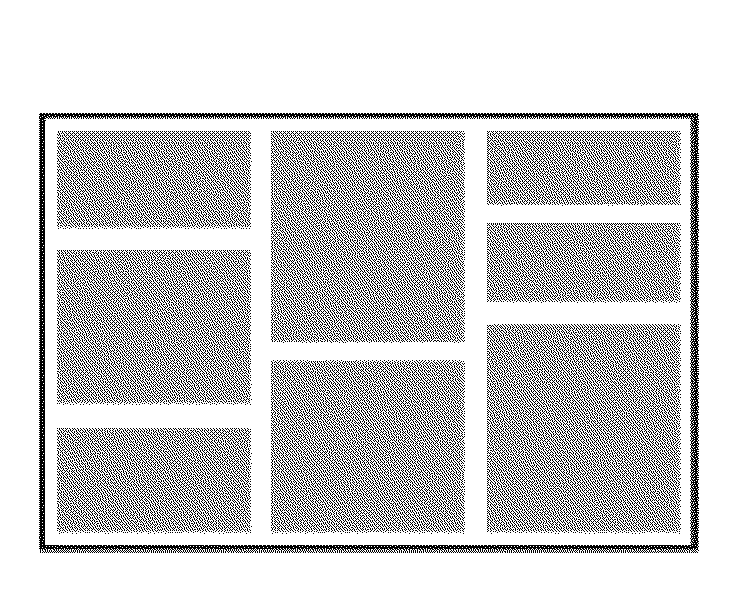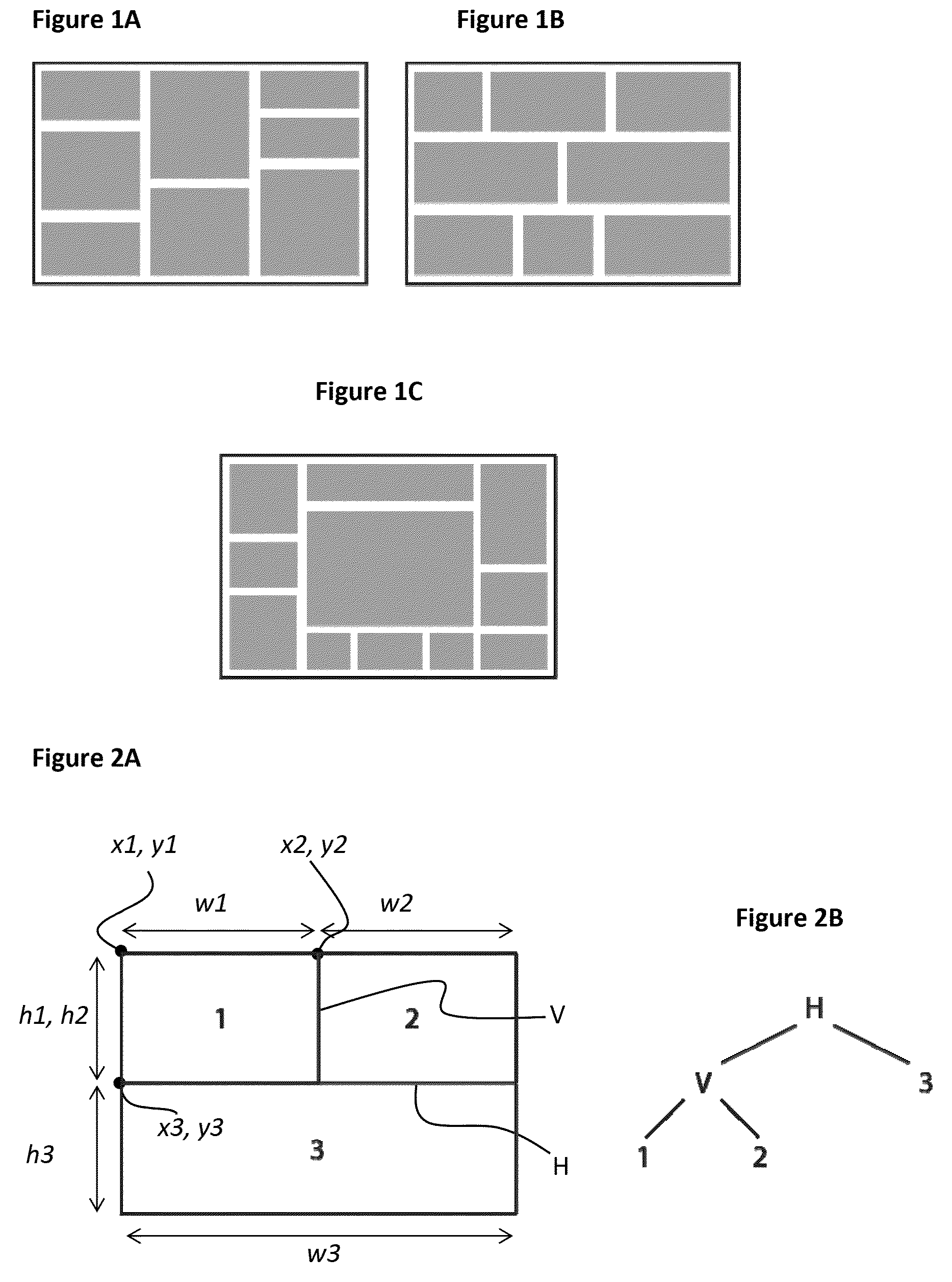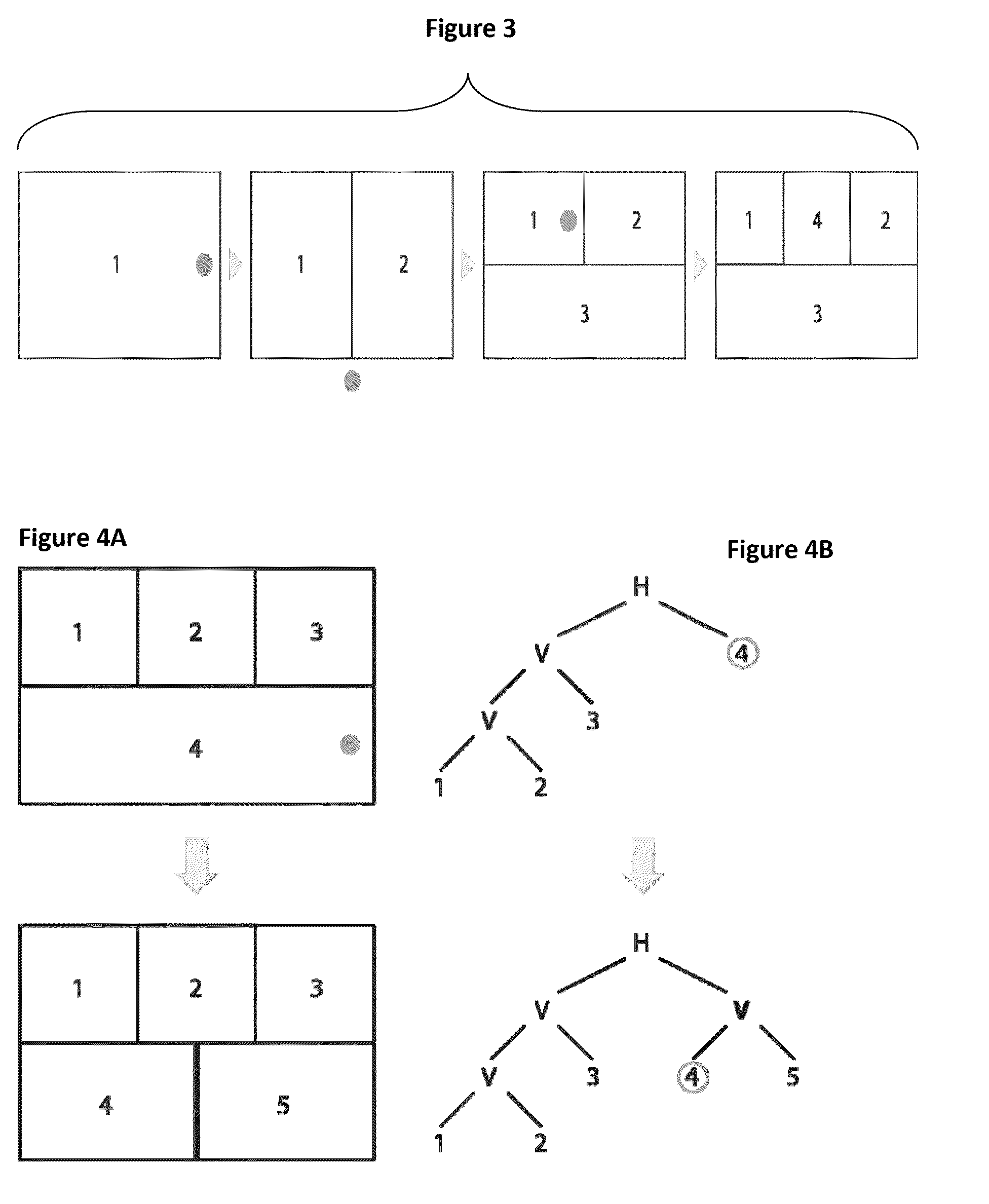Screen layout manager
a layout manager and screen technology, applied in the field of software layout manager systems, can solve the problems of lack of flexibility, lack of flexibility, and conventional layout managers do not offer the needed flexibility or are too complex for non-experts, and achieve the effect of easy definition
- Summary
- Abstract
- Description
- Claims
- Application Information
AI Technical Summary
Benefits of technology
Problems solved by technology
Method used
Image
Examples
Embodiment Construction
Defining a Layout
[0056]A layout manager according to embodiments of the invention provides a layout based on binary space partitioning (BSP) that offers the flexibility and predictability of a constraint-based layout but with the ease-of-use of a group-based layout. In a BSP layout, the whole available space represented by a rectangle is recursively subdivided by horizontal or vertical lines H, V—called partitions (or edges)—into smaller spaces—called tiles 1,2,3. A very simple binary space partitioning (BSP) layout and its tree definition representation is illustrated in FIG. 2 where H represents an horizontal partition and V a vertical partition. Each tile may contain, for instance, one visual element (e.g., a table or a graph) that is automatically resized to fill the available space. A BSP layout can be represented as a binary tree as shown in FIG. 2 with each node of the tree being an partition and each leaf a tile. A sub-layout is defined as the layout represented by a part of...
PUM
 Login to View More
Login to View More Abstract
Description
Claims
Application Information
 Login to View More
Login to View More - R&D
- Intellectual Property
- Life Sciences
- Materials
- Tech Scout
- Unparalleled Data Quality
- Higher Quality Content
- 60% Fewer Hallucinations
Browse by: Latest US Patents, China's latest patents, Technical Efficacy Thesaurus, Application Domain, Technology Topic, Popular Technical Reports.
© 2025 PatSnap. All rights reserved.Legal|Privacy policy|Modern Slavery Act Transparency Statement|Sitemap|About US| Contact US: help@patsnap.com



